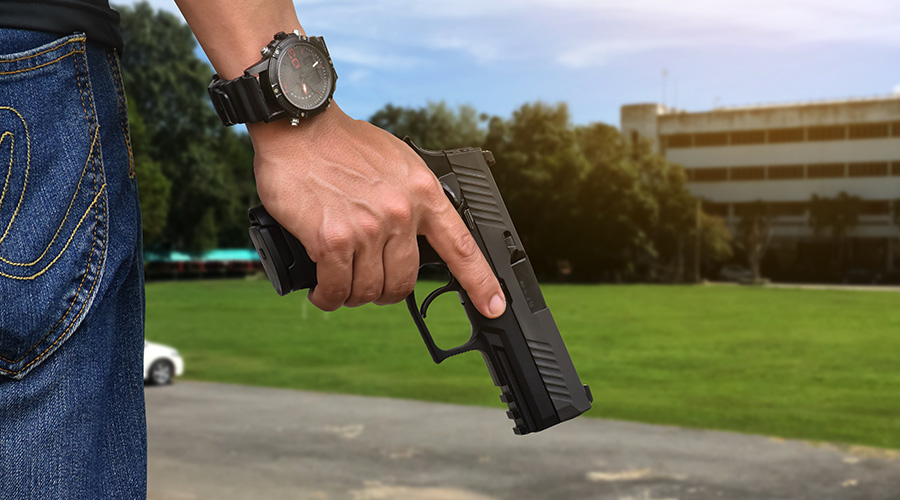Drone Attacks: Three Steps to Protect Your Facility
Stay current with technology, assess risks, and develop a response plan.
Experience with intelligence, operations, and security in the U.S. government shows the ever-growing benefits technology brings — but also the great threats it presents. There is no better example of a technology with great benefits and even greater challenges than drones, or unmanned aircraft systems (UAS), specifically commercial drones. It’s imperative that security and intelligence personnel stay current with technology, conduct a drone security and vulnerability assessment, and have a drone detection and response plan in place.
When I was stationed in Iraq as a commander and senior director of operations in the U.S. Army between 2010 and 2011, I witnessed both the benefits and dangers of drones as a battalion commander with UAS capabilities and then later as a theater director of intelligence. In the latter role I saw firsthand how drones can be used to carry weapons weighing up to 15 pounds, for illegal surveillance, to steal cyber secrets, and more.
It is estimated that there will be more than 800,000 drones in private hands in the United States alone by 2021. And as drone technology continues to develop, it presents an ever-growing challenge for security professionals, particularly those overseeing public gathering areas. To keep people safe, we must focus on developing policies on how to deal with drones from a defensive security standpoint.
It’s important to remember that there are many positives associated with drones, including construction assessment, farming, commerce, healthcare, security, and recreational uses. Drones can be used for deliveries and crowd control and as security monitors; for assessing road conditions during inclement weather; for planting and assessing crops; for delivering emergency healthcare; and for the monitoring of oil refineries, power plants, power grids, and critical infrastructure.
But as beneficial as these uses are, the threats are vast. Drones can be used for potential cyber or physical attacks on critical infrastructure (power, water, life systems), airports, sporting events, public open-air events, concerts, and businesses. From intellectual property theft, to spying and assassinations, the list goes on, perhaps limited only by the imagination.
Terrorism is a top-of-mind concern. Terrorist organizations have developed, conducted, and promoted weaponized drone attacks in conflict zones, promulgating the technology for use outside of these areas.
In fact, ISIS conducted a propaganda campaign that focused on its successes of carrying out lethal UAS attacks against coalition forces in Iraq and Syria. In its propaganda efforts, ISIS encouraged its supporters in the West to use weaponized UAS platforms against Western targets. ISIS also provided techniques, tactics, and procedures for UAS operations. Meanwhile, other criminal organizations, including drug cartels, are also using UAS for nefarious purposes.
Risk mitigation measures
There is no simple solution to this wide range of threats, so it’s imperative to implement risk mitigation measures tailored to address specific security situations and facility needs. In particular, the protection of public space should be a top priority for every security director and intelligence professional, and this can be achieved in part by staying informed about current advances in drone technology. A good place to start are the top commercial drone producers. The market is controlled by three companies that supply nearly 100 percent of drones sold globally. By understanding their product lines and specifications you will gain a better understanding of capabilities associated with drone use in public space.
There are additional steps to protect public spaces from unauthorized drone activity. First, it’s imperative that security and intelligence personnel conduct a targeted drone security and vulnerability assessment focusing on access to the facility and its public space.
This will also include identifying and prioritizing vulnerabilities that require protection and expanding outward from those areas, establishing no-fly boundaries that should be heavily monitored. This requires identifying the resources — including capital, personnel, systems, and outside experts — to implement the infrastructure and expertise required for the detection and monitoring of threats.
Identifying vulnerabilities for the facility’s airspace through advanced software and modeling tools is another key element of any plan to mitigate threats. Technological mitigation platforms — like a drone detection and monitoring system, mass communication notification system, physical air-space observation posts, and communication systems — are necessary, as is an early warning system that allows for the time and space necessary for a quick reaction.
But for all of this to come together in times of a real threat, a drone detection and response plan is necessary. It is essential to rehearse and train staff on the drone detection and response plan to establish and confirm standard operating procedures and emergency response actions. Law enforcement, private security, medical services, and hazardous material experts should be brought in where possible.
Bill Edwards (BEdwards@thorntontomasetti.com) is vice president of protective design and security at Thornton Tomasetti. He is responsible for planning, coordinating, resourcing, and building operational/technical security services for the company.
Related Topics:












